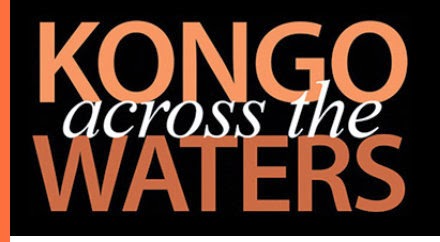Credit: Mboma peoples, Matadi, Lower Congo, DRC, Sword of honor, c. 16th-17th century, Royal Museum for Central Africa, Tervuren, Belgium
First exhibition in America to deeply explore the legacy of Kongo culture
PRINCETON, N.J.—In
1483 when Portuguese explorers first set foot in the Kingdom of the
Kongo located in parts of today’s Democratic Republic of the Congo,
Republic of the Congo, and Angola, they discovered a sophisticated
society with a strong artistic and cultural life. The exchange between
the Kongo and Europe continued as enslaved Kongolese, transported to the
Americas through the Atlantic slave trade, left an imprint of their
cultural heritage on the development of art and music in the Americas.
Presenting masterpieces of Kongo and African-American art, Kongo across the Waters will trace a journey of ideas, artistic practices and religious beliefs across 500 years and three continents.
On view at the Princeton University Art Museum from Oct. 25, 2014 to Jan. 25, 2015, Kongo across the Waters
will be the single most important project ever presented at Princeton
University that addresses the issues of the slave trade and colonialism
through the lens of the artistic traditions of Africa and the African
diaspora.
“This exhibition presents some of the finest works of African art in
the world, and reminds us of Kongo’s visual legacy throughout the
Atlantic world—an idea of central importance, considering the fact that
nearly one-fourth of first-generation African slaves in the United
States were from the Kongo region,” said Princeton University Art Museum
Director James Steward. “In doing so, this represents the Museum’s most
ambitious project to date involving African artistic production and
culture.”
Kongo across the Waters
features over 100 works, including numerous pieces never before
exhibited in the United States. It is accompanied by a catalogue with
entries by leading scholars in archaeology, history, religion and
African and African-American art history. In addition to featuring rare
archaeological finds, the exhibition includes sculpture, carved tusks,
musical instruments, baskets and textiles from Kongo and the Americas.
Works attributed to the Kongo artist “The Master of Kasadi,” the
American cane carver Henry Cudgell and the South Carolina basket weaver
Elizabeth F. Kinlaw will be on view, along with contemporary art by
Steve Bandoma (Democratic Republic of Congo), Edouard Duval-Carrié
(Haiti and USA), José Bedia (Cuba), Renée Stout (USA) and Radcliffe
Bailey (USA). A video produced for the exhibition reveals the notable
influence of Kongolese music on the development of jazz.
Kongo across the Waters
is a joint project organized by the Samuel P. Harn Museum of Art,
University of Florida, Gainesville, Florida, and the Royal Museum for
Central Africa, Tervuren, Belgium, and is supported by an indemnity from
the Federal Council on the Arts and the Humanities. At Princeton,
supplementary interpretive content has been developed by the Princeton
University Art Museum. The exhibition at Princeton has been made
possible by generous support from the National Endowment for the Arts;
the Frances E. and Elias Wolf, Class of 1920, Fund; Susan and John
Diekman, Class of 1965; the David A. Gardner ’69 Magic Project; the
Department of Art and Archaeology, Princeton University; and an
anonymous fund. Additional funds have been provided by the Allen R.
Adler, Class of 1967, Exhibitions Fund; Heather and Paul G. Haaga Jr.,
Class of 1970; the New Jersey State Council on the Arts/Department of
State, a Partner Agency of the National Endowment for the Arts; and by
the Center for African American Studies, the Program in African Studies,
the Office of Religious Life, the Lewis Center for the Arts, and the
Department of English, Princeton University. Further support has been
provided by the Partners and Friends of the Princeton University Art
Museum.
# # #





No comments:
Post a Comment